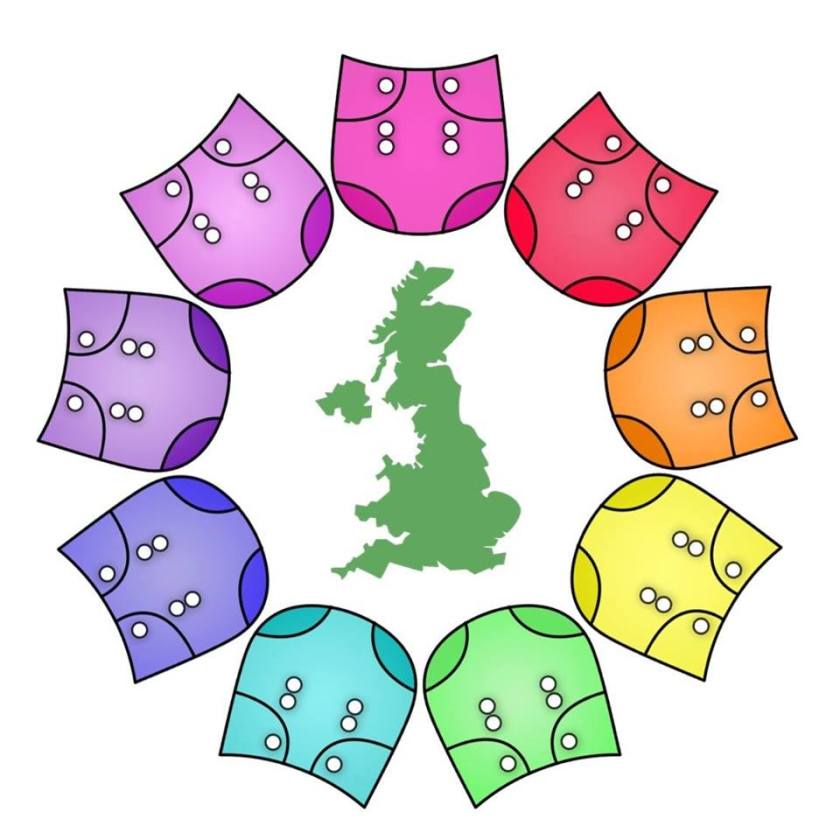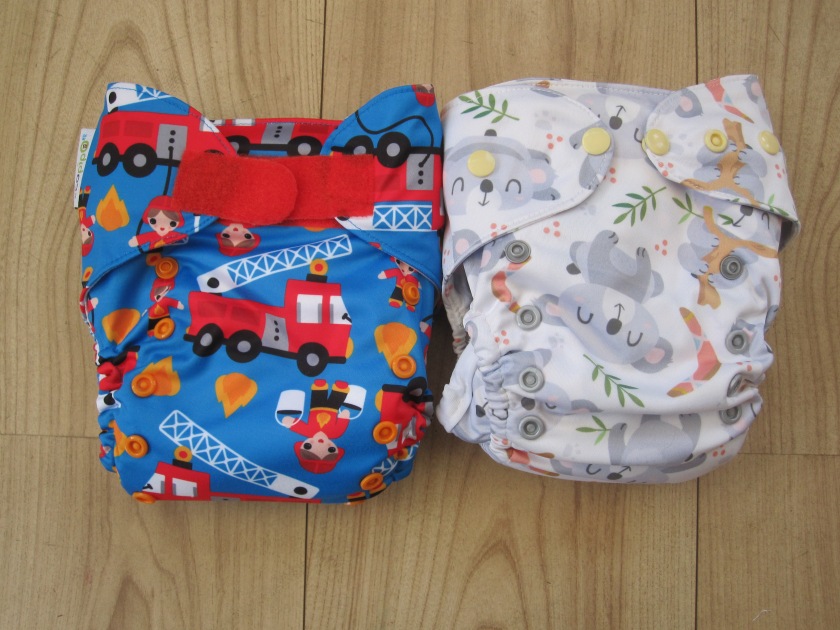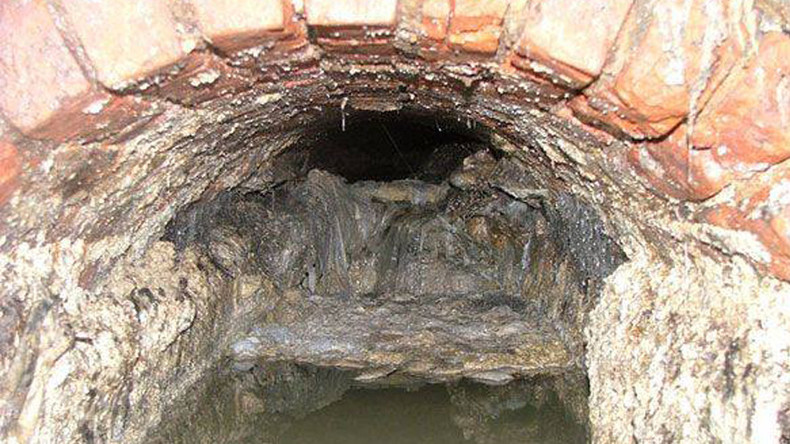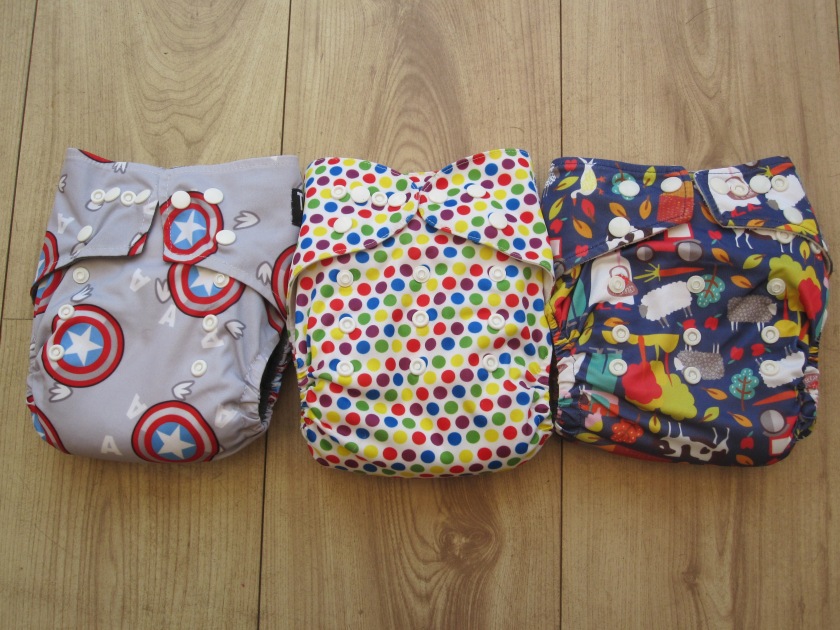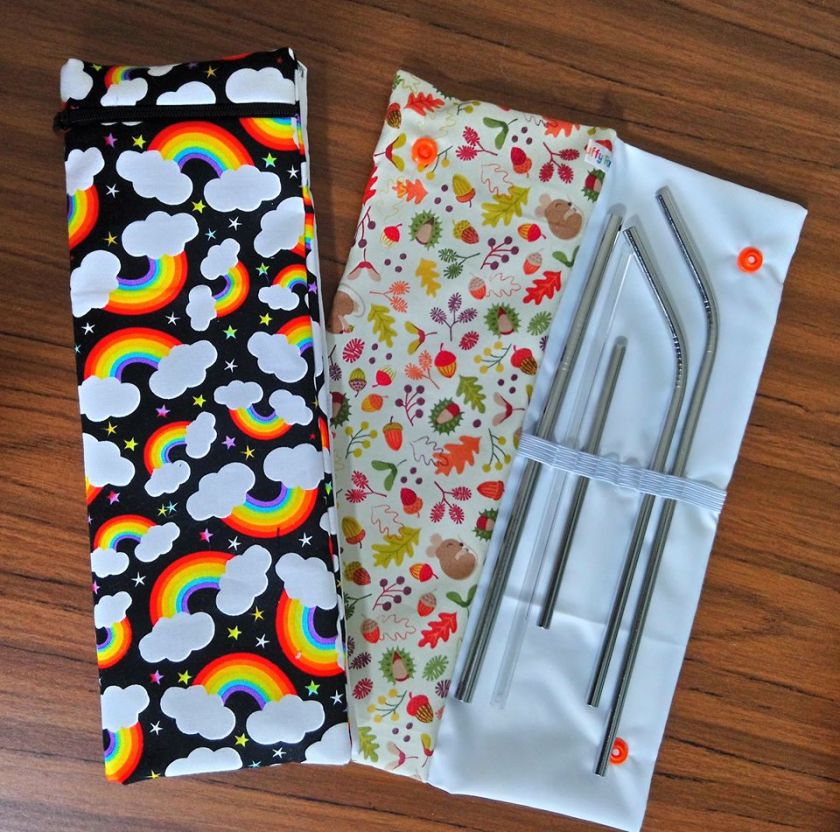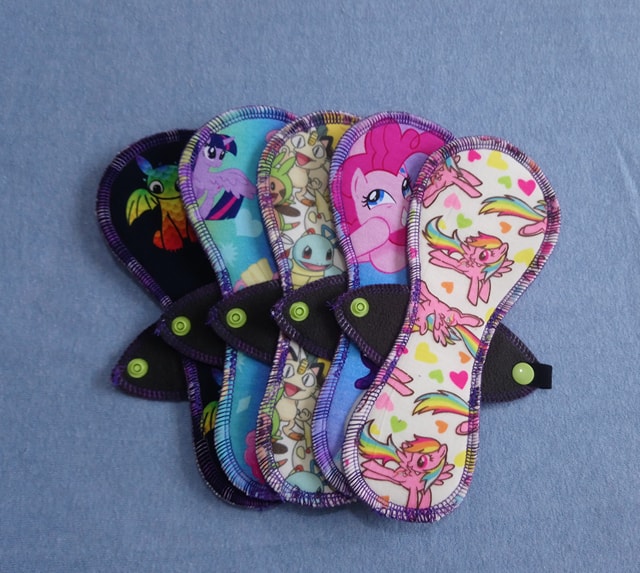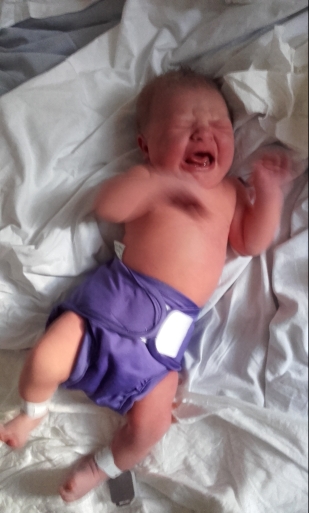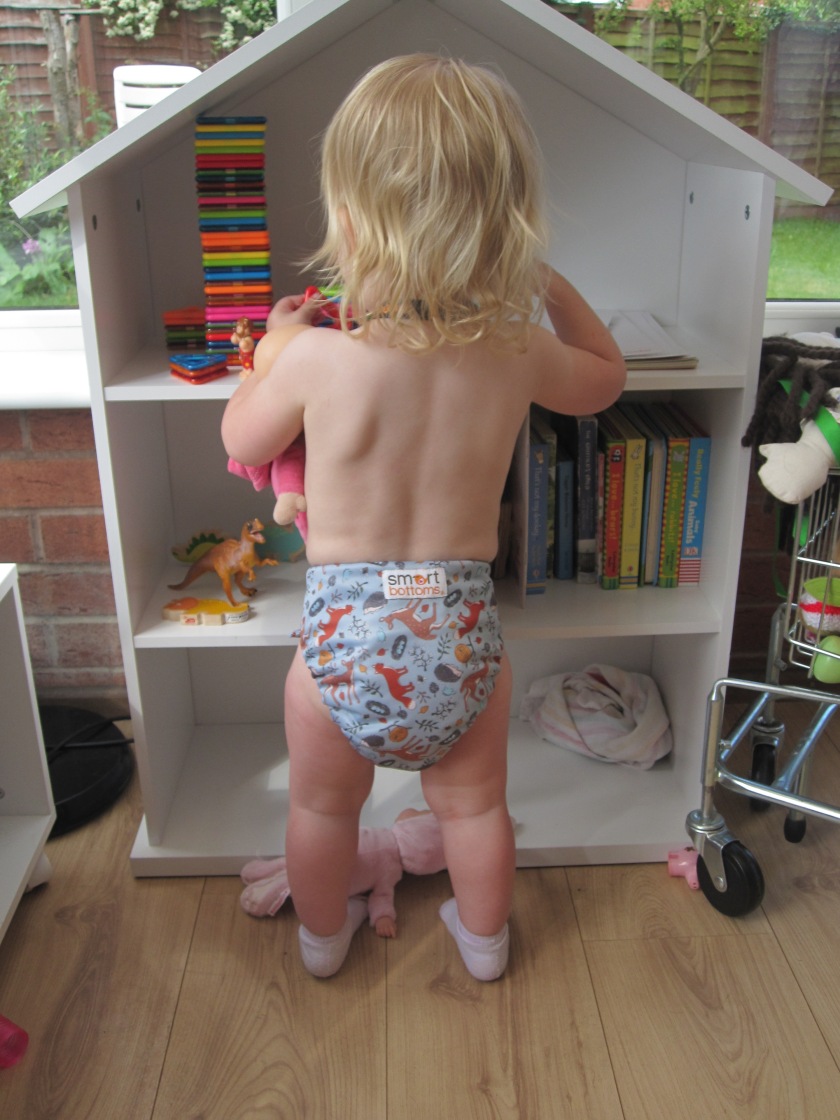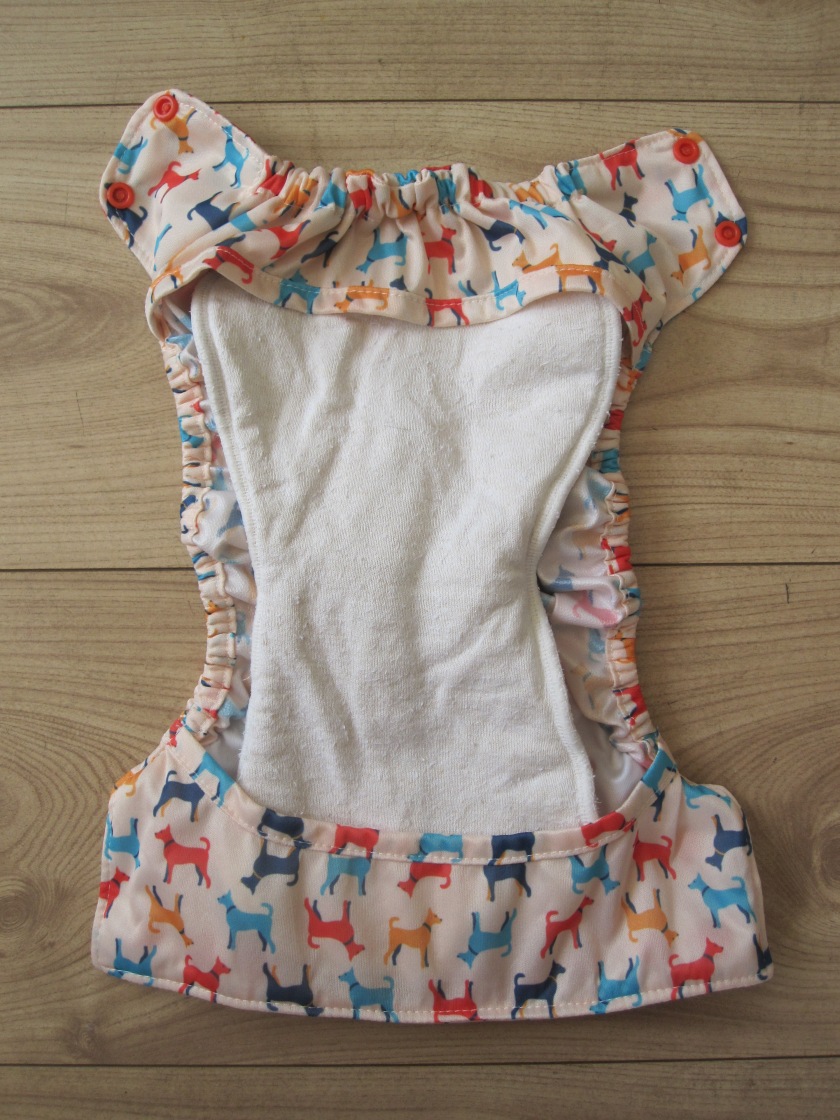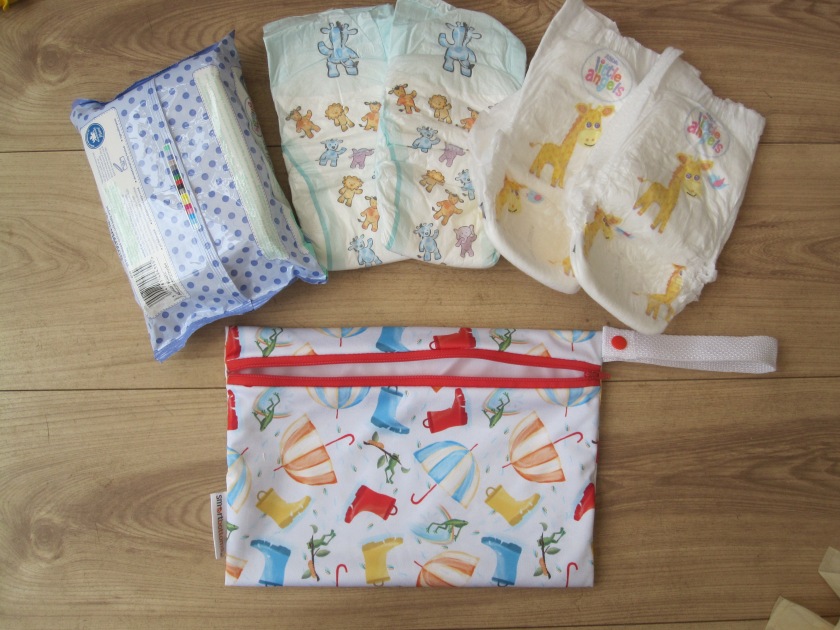Just as every disposable nappy user has a favourite brand they use on their child, the same is true with reusable nappies. All reusable nappies have the same two basic parts, an absorbent inner and a waterproof outer; there are basic differences between the three main types of reusable nappy, which are as follows:
- Pockets
- All-in-ones (AIOs); also incorporating snap-in-ones (SIOs)
- Fitted nappies (and wraps); sometimes called a two-parter
Pocket nappies
These have a waterproof layer and a non-absorbent fleece layer which are sewn together with an opening left to form the ‘pocket’ between the two layers; they have no absorbency built into them, so all absorbency must be added in the form of inserts.
The main advantages of pocket nappies are that you can tailor the combination of inserts specifically for each child, and that you can separate all of the parts out for faster drying; it also means you can have extra inserts and use those in the pockets (which dry very quickly), meaning you can get away with fewer nappies overall.
The main disadvantages of pocket nappies are that they can be time-consuming to stuff with the inserts after each wash and that overboosting (adding too many inserts) can compromise the fit of the nappy, causing it to leak.
Pockets are a popular choice for a day nappy, particularly for families where drying space is at a premium.

All-in-one (AIO) nappies
These have absorbent materials attached to the waterproof layer already. Extra absorbency can be added in the form of boosters.
The main advantage of AIO nappies is that they require no extra preparation to use (no stuffing) as the absorbency is already attached.
The main disadvantages of AIOs are that they are less customisable in terms of absorbency as you cannot remove the absorbency that is already built in, plus you have to wait for the whole nappy to dry before reusing it, and (like pockets) overboosting can compromise the fit of the nappy, causing it to leak.
AIOs are a popular choice for a day nappy, especially for parents sending reusable nappies to nurseries or childminders as there are no parts to get lost.
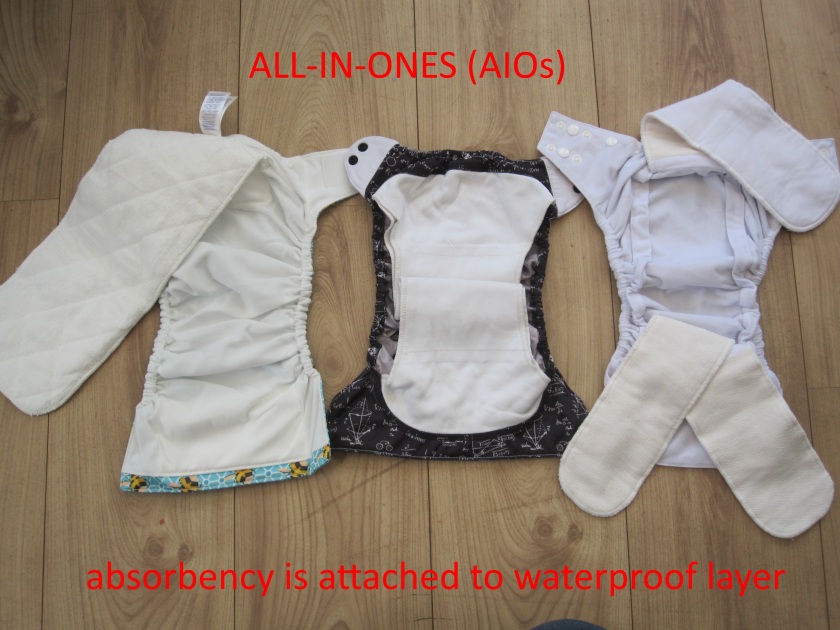
Snap-in-ones (SIOs) are slightly modified AIO nappies, where the inserts snap onto the waterproof layer. This means you can have the benefits of an AIO, but with the added advantage of being able to separate out the parts for faster drying like a pocket nappy.

Fitted nappies
Fitted nappies are completely absorbent and have no waterproof layer built in, so the whole nappy absorbs liquid. This means that they can hold more liquid overall, but require a separate wrap over the top to contain the liquid, hence why they are sometime called ‘two-parters’.
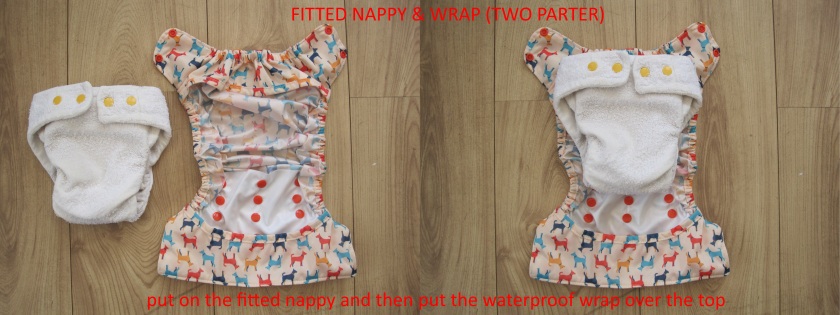
Flat nappies (prefolds and terry towels) can also be used as a fitted nappy; they can be folded in various ways (You Tube is your friend here!) and held in place with a nappy nippa (the modern equivalent of a safety pin) before the wrap is added, or simply folded into a rectangle and placed inside the wrap before being fitted.

The main advantage of fitted/flat nappies is the increased capacity, especially as you can add extra boosting between nappy and wrap without compromising the fit of the nappy. The separate wrap over the top also means they contain better, so the risk of a poonami is reduced; this is especially useful with newborn babies whose poos are very liquid in consistency.
The main disadvantage is drying time; as they can hold more liquid, they will take longer to dry. Fitted nappies are usually used as night nappies and for newborns due to their ability to hold lots of liquid, but if you have a heavy wetting child, they will be your main option during the day too.
BTP vs sized nappies
The sizing of reusable nappies is completely different to disposable nappies too. Whereas disposable nappies come in lots of sizes which each cover a small weight range, reusable nappies fall into two categories, birth-to-potty (BTP) and sized (size 1,2,3)

BTP nappies usually fit your baby from 10-35lb in weight; the reason they can fit over such a wide weight range is due to rise poppers on the front of the nappy, which can be changed as your baby grows. The advantage of BTP nappies over sized nappies is that (in theory) you only need to buy one set of nappies to see your child from birth until toilet-training; in reality, BTP nappies are unlikely to fit most newborns properly until they are a few weeks old.
Sized reusable nappies cover smaller weight ranges but can offer a better fit. Size 1 covers newborn-15lb, size 2 covers 15-30lb, size 3 covers 30lb plus (all weight ranges are approximate and will vary between sized nappy brands); however, it can mean buying two, or even three, sets of nappies before your baby toilet-trains.
Inserts, boosters and liners
I have used these terms earlier and wanted to clarify what they are. Inserts and boosters are the same thing, anything absorbent that is added to a reusable nappy is an insert/booster. They tend to be called ‘inserts’ when used in pocket nappies, as they are ‘inserted’ into the pocket, and ‘boosters’ when added to AIOs and two-parters as they are additional to the absorbency that is there already and are being used to ‘boost’ that absorbency and increase it.
The most common materials used for inserts/boosters are microfibre, charcoal (microfibre with charcoal fleece around the outside) bamboo, cotton, hemp (left to right in the photo below) and, more recently, zorb.

Liners can also get confused with inserts/boosters. Liners are NOT absorbent; their primary function is to aid with easier disposal of solids from the nappy. Options for liners are fleece and disposable and they are completely optional (definitely not flushable though, despite what the packaging might say! See my earlier blog post for more details on why disposable liners should not be flushed)
The added benefit of a fleece liner is that it can help to keep baby’s skin drier, but most pocket nappies already have a fleece inner anyway, so an additional liner isn’t always needed.
Finding the right nappies for your child
There are reusable nappies out there that will suit your baby. The most cost-effective way to find which nappies those are is to find your local nappy library and borrow a kit. The volunteers there will help and support you to find the perfect nappy for your child. Find yours using the link below!
UKNN map
